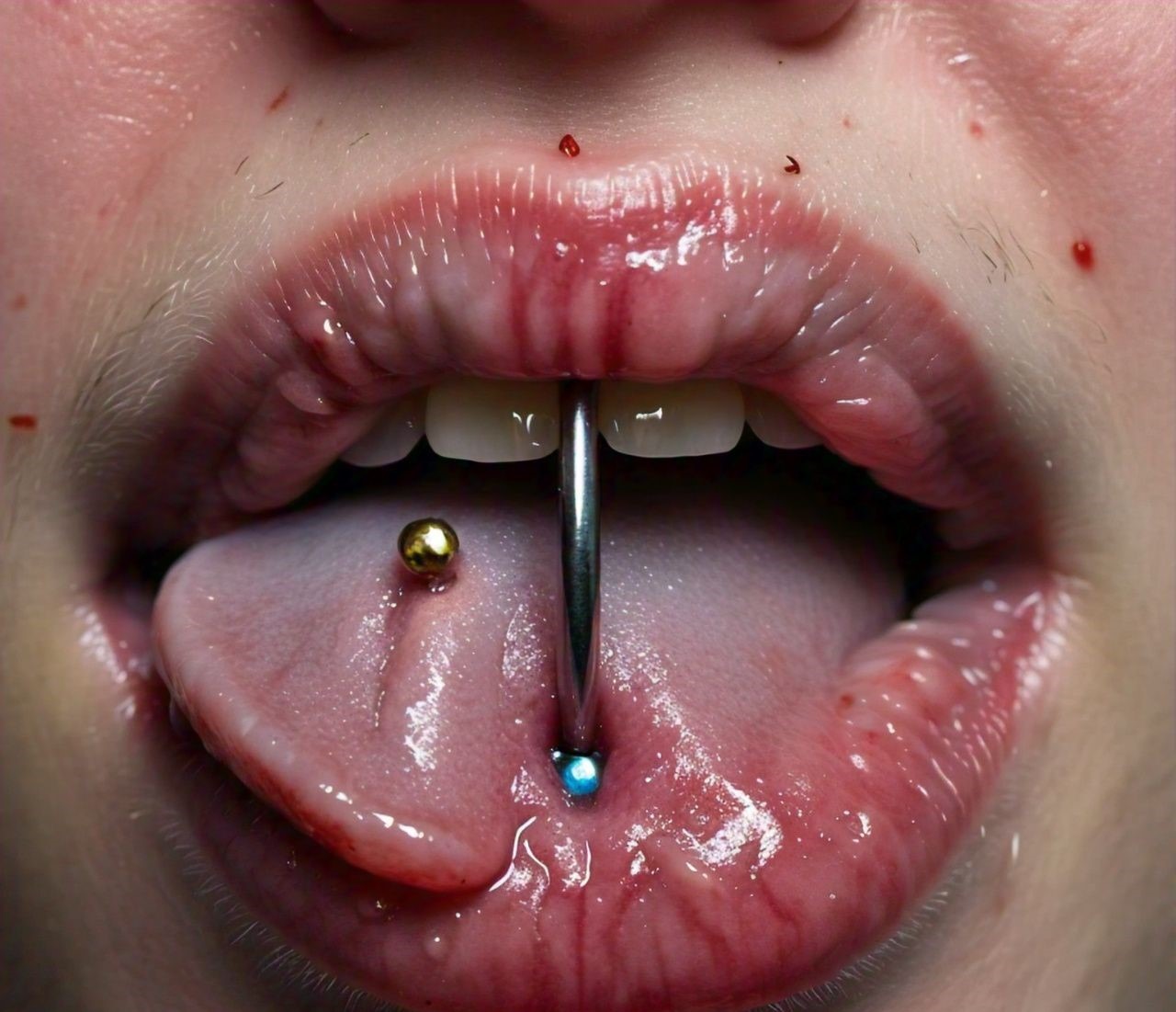Lyme Disease Teeth: What to Do? New 2024
Lyme disease Teeth, caused by the bacterium Borrelia burgdorferi, is a tick-borne illness that can lead to a wide range of symptoms, including those affecting the teeth and oral health. As awareness of Lyme disease increases, understanding its potential impact on dental health is crucial. This blog post will delve into the connection between Lyme disease and teeth, providing comprehensive insights on how to manage and mitigate these issues in 2024.
Understanding Lyme Disease and Its Impact on Teeth
Lyme disease is primarily transmitted through the bite of infected black-legged ticks. The disease can manifest in various ways, often leading to chronic conditions if not treated promptly. One lesser-known aspect of Lyme disease is its potential impact on dental health. The term “Lyme Disease Teeth” refers to the various dental issues that can arise as a result of Lyme disease, including tooth pain, jaw discomfort, and gum problems.
Common Dental Issues Associated with Lyme Disease Teeth
- Tooth Pain and Sensitivity
- Individuals with Lyme disease often report unexplained tooth pain and sensitivity. This discomfort can occur even in the absence of cavities or other dental issues, making it a significant concern for those affected by Lyme disease teeth.
- Jaw Pain and TMJ Disorders
- Lyme disease can affect the temporomandibular joint (TMJ), leading to jaw pain and dysfunction. TMJ disorders are common among those with Lyme disease, causing pain, clicking sounds, and difficulty in chewing.
- Gum Inflammation and Bleeding
- Gum problems, including inflammation and bleeding, are also associated with Lyme disease teeth. The bacteria causing Lyme disease can trigger an immune response that affects the gums, leading to discomfort and potential periodontal issues.
- Dry Mouth and Oral Thrush
- Lyme disease can lead to decreased saliva production, resulting in dry mouth. This condition can increase the risk of oral infections, such as oral thrush, and exacerbate other dental issues linked to Lyme disease teeth.
Why Does Lyme Disease Affect Dental Health?
The connection between Lyme disease and dental health can be attributed to several factors:
- Immune Response and Inflammation
- Lyme disease triggers a widespread immune response that can lead to inflammation in various parts of the body, including the oral cavity. This inflammation can manifest as gum problems, jaw pain, and other dental issues associated with Lyme disease teeth.
- Neurological Impact
- The bacteria responsible for Lyme disease can affect the nervous system, leading to neuropathic pain. This can result in unexplained tooth pain and sensitivity, characteristic of Lyme disease teeth.
- Co-Infections
- Individuals with Lyme disease may also have co-infections with other tick-borne illnesses. These co-infections can compound the impact on dental health, further complicating the management of Lyme disease teeth.
Managing Dental Health with Lyme Disease Teeth
Effective management of dental health in individuals with Lyme disease requires a multi-faceted approach. Here are some strategies to consider:
- Regular Dental Check-Ups
- Frequent dental visits are crucial for monitoring and managing the symptoms associated with Lyme disease teeth. Regular check-ups can help identify and address dental issues early, preventing them from worsening.
- Comprehensive Oral Hygiene
- Maintaining good oral hygiene is essential for individuals with Lyme disease teeth. This includes brushing at least twice a day, flossing daily, and using an antibacterial mouthwash to reduce the risk of infections.
- Managing Dry Mouth
- For those experiencing dry mouth, staying hydrated and using saliva substitutes can help alleviate symptoms. Chewing sugar-free gum can also stimulate saliva production and improve oral comfort.
- Pain Management
- Over-the-counter pain relievers can help manage tooth and jaw pain associated with Lyme disease teeth. In some cases, dentists may prescribe stronger medications or recommend physical therapy for TMJ disorders.
- Addressing Gum Problems
- If gum inflammation and bleeding are present, it is essential to use a soft-bristled toothbrush and avoid harsh mouthwashes that can exacerbate the condition. Regular dental cleanings and potentially more frequent visits to the dentist may be necessary.
The Role of Diet in Managing Lyme Disease Teeth
Diet plays a crucial role in managing the symptoms of Lyme disease teeth. Here are some dietary considerations:
- Anti-Inflammatory Foods
- Consuming a diet rich in anti-inflammatory foods can help reduce inflammation and alleviate symptoms. Foods such as leafy greens, berries, fatty fish, and nuts are beneficial for overall health and can help manage Lyme disease teeth.
- Avoiding Sugary and Acidic Foods
- Sugary and acidic foods can exacerbate dental issues by promoting tooth decay and gum problems. Limiting the intake of these foods can help protect the teeth and gums, especially for those dealing with Lyme disease teeth.
- Hydration
- Staying well-hydrated is essential for maintaining oral health. Drinking plenty of water can help manage dry mouth and reduce the risk of oral infections associated with Lyme disease teeth.
When to Seek Professional Help
It’s important to know when to seek professional help for dental issues related to Lyme disease teeth. Here are some signs that indicate the need for a dental visit:
- Persistent Tooth Pain
- Unexplained tooth pain that persists despite good oral hygiene practices should be evaluated by a dentist to rule out any underlying issues related to Lyme disease teeth.
- Severe Jaw Pain or TMJ Symptoms
- Severe or persistent jaw pain, clicking sounds, or difficulty chewing may indicate TMJ disorders that require professional evaluation and treatment.
- Gum Inflammation and Bleeding
- Persistent gum inflammation and bleeding can be a sign of periodontal disease, which requires professional treatment to manage effectively.
Integrating Dental Care into Overall Lyme Disease Treatment
Integrating dental care into the overall treatment plan for Lyme disease is essential for managing Lyme disease teeth effectively. Coordination between healthcare providers, including primary care physicians, dentists, and specialists, can ensure a comprehensive approach to managing the condition.
- Communication Between Providers
- Ensuring that all healthcare providers are aware of the patient’s Lyme disease diagnosis and associated dental issues can facilitate better coordination of care and management of Lyme disease teeth.
- Holistic Treatment Approaches
- Incorporating holistic treatment approaches, such as nutritional counseling, physical therapy, and stress management, can complement dental care and improve overall well-being for those with Lyme disease teeth.
New Developments in 2024 for Lyme Disease Teeth
In 2024, several new developments and research advancements are expected to improve the understanding and management of Lyme disease teeth. Here are some promising areas of research:
- Advanced Diagnostic Tools
- Emerging diagnostic tools, including more accurate and rapid tests, are expected to improve the early detection of Lyme disease and its impact on dental health. These advancements can lead to more timely and effective management of Lyme disease teeth.
- Innovative Treatment Options
- New treatment options, including novel antibiotics and immune-modulating therapies, are being developed to address the underlying causes of Lyme disease. These treatments may also help alleviate the dental issues associated with Lyme disease teeth.
- Interdisciplinary Research
- Increased collaboration between dental and medical researchers is expected to enhance the understanding of the connection between Lyme disease and dental health. This interdisciplinary approach can lead to better strategies for managing Lyme disease teeth.
Preventive Measures for Lyme Disease Teeth
Preventive measures are crucial for reducing the risk of dental issues associated with Lyme disease teeth. Here are some steps to consider:
- Tick Prevention
- Preventing tick bites is the first line of defense against Lyme disease. Using insect repellents, wearing protective clothing, and performing regular tick checks can help reduce the risk of contracting Lyme disease and subsequently developing Lyme disease teeth.
- Early Detection and Treatment
- Early detection and treatment of Lyme disease are essential for preventing chronic symptoms and complications, including those affecting dental health. Prompt medical attention can reduce the risk of developing Lyme disease teeth.
- Maintaining Overall Health
- Maintaining overall health through a balanced diet, regular exercise, and stress management can support the immune system and reduce the impact of Lyme disease on dental health.
Personal Stories: Living with Lyme Disease Teeth
Hearing from individuals who have experienced Lyme disease teeth firsthand can provide valuable insights and support for others facing similar challenges. Here are a couple of personal stories:
- Jane’s Story
- Jane, a 45-year-old Lyme disease patient, shares her journey of managing severe tooth pain and gum inflammation. Through regular dental check-ups, a strict oral hygiene routine, and dietary changes, Jane has found ways to manage her symptoms and improve her quality of life.
- Michael’s Experience
- Michael, a 30-year-old Lyme disease sufferer, discusses his struggles with TMJ disorders and jaw pain. By working closely with his dentist and incorporating physical therapy into his treatment plan, Michael has managed to alleviate his symptoms and regain normal jaw function.
Conclusion
Managing Lyme disease teeth requires a comprehensive approach that includes regular dental care, good oral hygiene practices, dietary considerations, and coordination between healthcare providers. By understanding the connection between Lyme disease and dental health, individuals can take proactive steps to manage their symptoms and improve their overall well-being.
For more detailed information and resources on managing Lyme disease and other health conditions, visit RealitynFact. This site offers valuable insights and practical advice to help you navigate the complexities of Lyme disease teeth and other related issues.
The Importance of Awareness and Education
Increasing awareness and education about Lyme disease teeth is crucial for improving diagnosis, treatment, and management. Here are some ways to promote awareness:
- Community Education Programs
- Hosting community education programs can help disseminate information about Lyme disease and its potential impact on dental health. These programs can be conducted by healthcare providers, dental professionals, and support groups.
- Online Resources and Support Groups
- Utilizing online platforms to share information, personal stories, and support can help individuals affected by Lyme disease connect with others and find valuable resources.
- Professional Training
- Ensuring that dental and medical professionals receive training on recognizing and managing Lyme disease can improve patient care and outcomes. Continuing education courses and seminars can keep healthcare providers informed about the latest developments in Lyme disease management.
Future Directions in Research and Treatment
As research on Lyme disease continues to evolve, new treatment strategies and preventive measures are likely to emerge. Here are some potential future directions:
- Gene Therapy
- Advances in gene therapy could lead to new treatments for Lyme disease by targeting the genetic components of the bacteria. This approach could potentially reduce the occurrence of dental issues associated with Lyme disease.
- Improved Vaccines
- Development of more effective vaccines against Lyme disease can help prevent the condition and its complications, including dental problems. Ongoing research aims to create vaccines that provide long-lasting protection.
- Personalized Medicine
- Personalized medicine, which tailors treatment plans to an individual’s genetic makeup and specific health needs, could improve the management of Lyme disease. This approach can lead to more effective and targeted treatments.
Advocacy and Policy Changes
Advocacy efforts and policy changes are essential for addressing the challenges faced by individuals with Lyme disease teeth. Here are some areas of focus:
- Insurance Coverage
- Advocating for comprehensive insurance coverage for Lyme disease treatment, including dental care, can help individuals access the necessary medical and dental services.
- Research Funding
- Increasing funding for research on Lyme disease and its dental implications can lead to new discoveries and improved treatments. Supporting organizations and initiatives that fund Lyme disease research is crucial.
- Public Health Initiatives
- Implementing public health initiatives that focus on tick prevention, early diagnosis, and treatment of Lyme disease can reduce the incidence of the condition and its associated dental issues.
Conclusion
Lyme disease represent a significant and often overlooked aspect of Lyme disease. By understanding the connection between Lyme disease and dental health, individuals can take proactive steps to manage their symptoms and improve their overall well-being. Regular dental check-ups, comprehensive oral hygiene practices, dietary considerations, and coordination between healthcare providers are essential components of effective management.
Increasing awareness, education, and advocacy efforts can help improve the diagnosis and treatment of Lyme disease. As research continues to evolve, new treatment strategies and preventive measures will emerge, offering hope for better management of this condition.
For more information on fitness and health, check out these resources:
Explore more articles on our site:
- How to Increase Running Stamina for Beginners at Home
- What Happens if You Don’t Get Enough Sleep Consistently: Effects and Solutions
- The Ultimate Guide to Healthy Living in 2024
- The Future of Artificial Intelligence: What to Expect
- Unlocking the Potential of Chat GPT Software: Revolutionizing AI Conversations
- Best Sleeping Position for Peripheral Artery Disease [New 2024]
- How to Increase Running Stamina for Beginners at Home
- 5 New Inner Thigh Exercises for Men and Women




